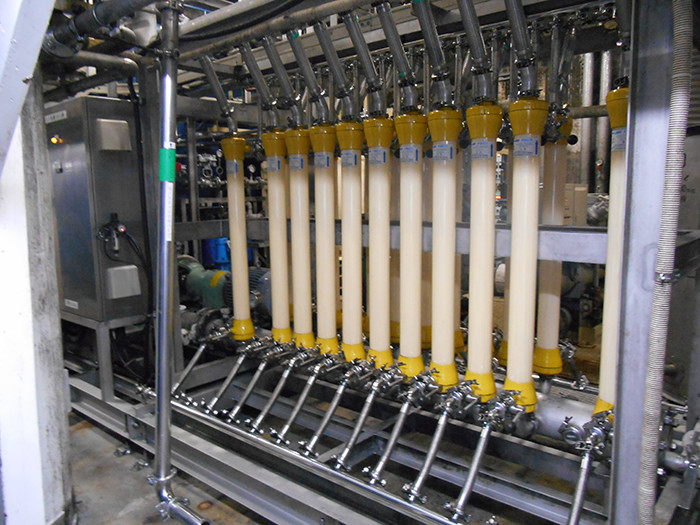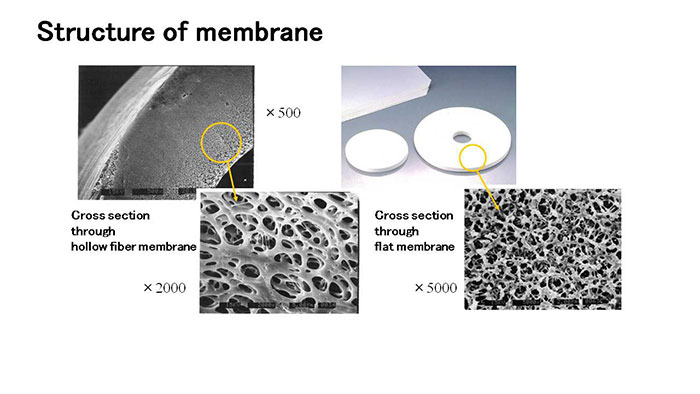Gengai-roka
- 【English】
- Ultrafiltration
- 【Japanese】
- 限外ろ過
Ultrafiltration is a system of filtration in which minute colloidal particles, which cannot be removed by conventional filtration, can be extracted from the dispersion medium (the sake) at the molecular level because of the size of the apertures in the membrane. The pore-size of the membrane is less than 0.2μm, so larger than that of a reverse osmosis membrane but smaller than for the membrane used in microfiltration. The most common are hollow-fibre construction made of polyether sulfone or polyacrylonitrile with a pore size from 0.001-0.01μm, which can be repeatedly used after backflushing. With a cutoff molecular weight of 20,000 to 50,000, macromolecules such as proteins can be removed.
Removing almost all of the enzyme content of nama-zake in this way reduces the rate of change in sake quality, making it possible to retain the taste and aroma of freshly-pressed sake over a long period of time. It also inhibits the production of isovaleraldehyde when sake is stored unpasteurized, resulting in sake which is free of so-called nama-hine-ka. This technology is mainly used in treating unpasteurized sake.

ultrafiltration machine

(Picture courtesy of Yuasa Membrane Systems Co.Ltd)

